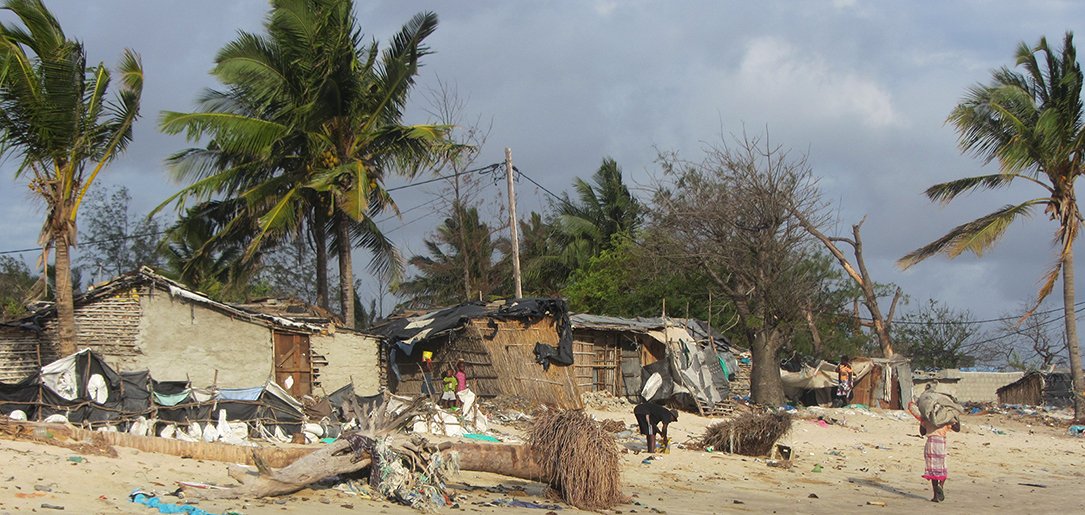Global perspective
Like the Netherlands, Belgium, France and the United Kingdom are increasingly embracing the idea of integrated flood risk management. Nevertheless, with different physical conditions and political climates, they employ different strategies. In addition, flood protection standards differ globally which results in inequalities between different groups of people. In some countries the concerns of local people are being overlooked, such as in Beira, Mozambique.
Management approaches across Europe
In the STAR-FLOOD project, Dries Hegger, Carel Dieperink, Marleen van Rijswick, Willemijn van Doorn-Hoekveld, Herman Kasper Gillissen and Peter Driessen analysed and assessed flood risk governance practices across various countries in Europe.
Central role of the state - France
In France, the national government represents the core actor in flood risk management. Dries Hegger, assistant professor of water and climate governance, explains, "The state plays a central role in defining non-buildable areas (flood prevention) and controls the successful Natural Disasters Fund, which operationally relies on insurance companies (flood recovery)". Decentralisation processes increasingly transfer responsibilities to the municipalities, but the available resources, legal frameworks and instruments do not yet sufficiently support local authorities. To strengthen the flood risk management in France, recommendations from the STAR-FLOOD project therefore focussed on reaping the benefits of further decentralisation and improving private citizen participation.
Diversification of strategies - the United Kingdom
The United Kingdom has been using a diversified and holistic approach to manage flooding for a long time, with the insurance industry having an important role to compensate for damage after flooding. All five flood strategies (flood defence, prevention, mitigation, preparation and recovery) are regarded as equally important. Carel Dieperink, senior researcher in multilevel water governance, observed, "This comprehensive character makes flood risk management in the United Kingdom complex and perhaps fragmented". Researchers in the STAR-FLOOD project therefore suggested shifting the coordination of strategies from the national to lower policy levels and increasing the involvement of local communities.
Regional responsibilities - Belgium
In Belgium, responsibilities for water management and spatial planning are organised at a regional level (Flemish, Walloon and Brussels-Capital regions). In contrast, disaster planning and insurance policy are governed at the national level, creating an institutionally fragmented flood risk management. Besides creating more opportunities for citizens’ input in the decision-making, the STAR-FLOOD project therefore emphasized the need for exchange of expertise and useful practices between the three regions. A good practice from the Flemish region is the mandatory water assessment when granting permits for construction in flood-prone areas, which fosters adaptive building in floodplains. In Wallonia, effective river contracts are being used to increase coordination at basin level.
Social impact of flood risk management
Postdoctoral researcher Murtah Shannon studies the impact of large-scale urban development interventions, such as flood protection measures, on land use and the livelihood of local people in Beira, Mozambique.
Urban flooding
Flooding is one of many challenges facing Beira, a low-lying coastal port city at the mouths of two rivers in Mozambique. Sea-level rise and port dredging have lead to substantial coastal erosion. In addition, the city is exposed to tropical storms and rainfall which causes recurrent urban flooding, turning vast sections of the municipality’s territory into wetlands. Urban agriculture is a common feature in Beira where farmers use flood events to cultivate rice on river floodplains. However, there is also damage from flooding which forces citizens to adapt on a household- and neighbourhood-level by, for example, raising their homes.

International projects
The municipality is lacking expertise, financial and human resources to develop a coherent strategy to deal with flood risks and has been relying on support from international development partners. Multiple international projects have invested in climate adaptation measures, such as the World Bank co-financing the installation of a drainage system and urban green zones.
The fate of local people is usually not considered in the planning processes
Studying these kind of projects, Murtah Shannon observed that residents are forced to move to make room for these large-scale urban development interventions. He also noticed that urban farmers might not be able to continue cultivating their fields after changes in urban flood occurrence due to these inventions. Murtah Shannon explains, “The fate of local people is usually not considered in the planning processes – they are being expropriated or lose their source of income, and it is arbitrary whether they receive compensation which largely depends on the compensation standards of the international development partners”.
Anticipate impact on the ground
For a more comprehensive approach, it is crucial to anticipate the impact of flood protection measures on the ground, take the concerns of local people into account and facilitate their involvement. “Interventions hereby also need to account for potential ripple effects that exacerbate flood risk in surrounding areas”, notes Murtah Shannon.




